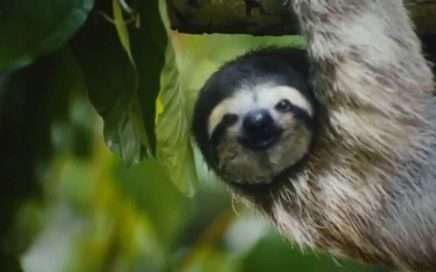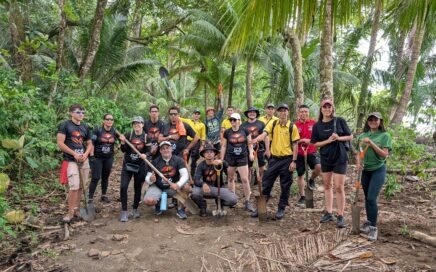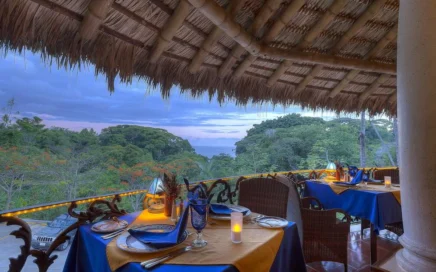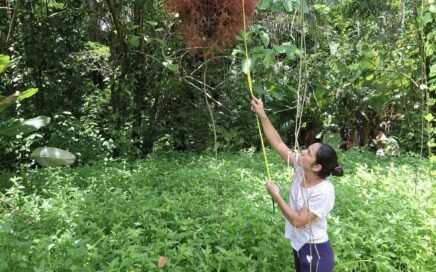
The Poisonous Granular Frog
AUTHOR: Josue Alberto Vargas Montoya (14 years of age)
The spectacular family of poisonous frogs (Dendrobatidae) surprises with its beautiful and colorful and lethal frogs. In Costa Rica, we have eight species of poisonous frogs. Those of the genus "Silverstoneia" and "Allobates" are not harmful.
The genus "Oophaga" is famous for its "pants," and the only two species of Oophaga of Costa Rica (O. Pumilio and O. Granulifera) are those that present pants.
The Granular Poisonous Frog (Oophaga Granulifera) is endemic to the Central Pacific and southern Costa Rica and part of Panama. It can be located near gorges in the woods.
In Costa Ballena, you can find the Red morpho with its green pants and his back "Granular," hence its name.
[ngg src="galleries" ids="326" display="basic_thumbnail"]
After Hacienda Barú towards the Central Pacific, its main red color changes to Orange for the Matapalo sector, yellow in Portalón, and finally an olive green in San Rafael, Quepos always with its green and sometimes light blue pants.
These frogs are in danger due to the loss of their habitat. It is also exploited by smugglers to sell them as Terrarium pets.
Its venom is neurotoxic and very dangerous. It is not recommended to manipulate animals in freedom, especially the beautiful multicolored frogs.
The dangerous thing would be for the poison to reach a wound, or you would suck it.
Indigenous peoples used the poison of these frogs for hunting, smearing the poison on their arrows. That is why some of them are called "arrowhead frogs or dart frogs" in general (phyllobates).
Granular poisonous frogs are well distributed in Costa Ballena. It is a great attraction for tourists and so of interest for tour guides. Costa Ballena is one of the main places to see the Red Morpho, one of the granular venomous frogs.
They are diurnal, and males are heard singing to attract females to reproduce. The female lays her eggs in leaf ponds in the forest. As the hours pass, the eggs become tadpoles waiting for their father to place them in a bromeliad where they will be safe.
The mother feeds them with infertile eggs until they grow and can find food on their own.

Busting Myths About Costa Rica Destination, Free Costa Rica Magazine #99
We’ve recently seen misinformation circulating suggesting that Costa Rica is an expensive destination.

Debunking myths about Costa Rica’s South Pacific destination
There is false information circulating that suggests the South Pacific Costa Rica is an expensive destination

Beach Clean Up in Uvita: Community Spirit in Action at Marino Ballena National Park
Beach Clean Up in Uvita Community Spirit in Action at Marino Ballena National Park Author: Sophie Schindler

Costa Rica’s First 100% Gluten-Free Gourmet Restaurant
Costa Rica’s First 100% Gluten-Free Gourmet Restaurant La Palapa Restaurant: Indulgence Without Compromise Travelers come to Costa Rica seeking nature, adventure – and memorable dining. At Cuna del Ángel, a boutique hotel nestled in the […]

Adventure Begins Where Comfort Ends: Our Rain-Soaked Snorkeling Tour to Caño Island
What I Learned from Traveling in the Rain or Why a Plastic Cape Can Teach Humility Our Snorkeling Tour to Caño Island

Increasing Biodiversity in the Path of the Tapir Biological Corridor
The area including the Path of the Tapir Biological Corridor in Costa Rica, is one of the few places with increasing biodiversity.
What to do, Where to eat and Where to stay…
- Activities and Tours
- Whale Watching Tour
- Natural Attractions
- Marino Ballena National Park
- Restaurants
- Hotels and Accommodations
Looking for business directories, maps or other printouts? We’ve got that too!
- Tide Charts
- Bus Schedules
- Dominical Business Directory
- Uvita Business Directory
- Costa Ballena Map
- Dominical map
- Uvita map
- Ojochal map
South Pacific Costa Rica Beaches
Dare to Discover and Enjoy…
Check out…
Need help planning your next trip? Let us help you with your Costa Rica vacations!
Email: carlos@ballenatales.com
Phone: +(506) 8946 7134 or +(506) 8914 1568



